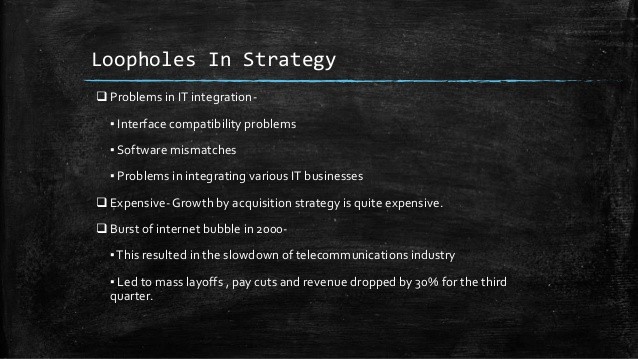Common Problems with Acquisitions Business Strategies
Post on: 16 Март, 2015 No Comment

Written by Gregory Steffens for Gaebler Ventures
Growing a business by acquiring other companies is a popular business strategy. However, there are many problems with acquisitions that you’ll need to be sure to avoid.
Organizations engage in acquisitions for a number of reasons ranging from the expansion of operations and market share to the desire for innovation and knowledge.
(article continues below)
Although many companies have found acquisitions to be highly beneficial to their operations, many more encounter problems that can have disastrous consequences to the future position of the firm.
What are the most common problems when acquiring another company?
To our mind, there are two common groupings of acquisition mistakes that can jeopardize the acquiring company’s viability.
Specifically, a poorly executed acquisition can harm a firm’s financial and strategic situation. In the rest of this article, we discuss these common mistakes business make when acquiring another compayn
Financial Pitfalls of an Acquisition Strategy
With typical acquisitions, the acquiring firm purchases the acquired firm for a market price plus a premium. The market price is determined by an efficient financial market that uses all known information to value the stock price.
The premium is an additional amount added to the efficient stock price that the company offers to insure the stockholders will sell. Basically, the acquiring organization must overpay for the acquired firm in order for the transaction to occur.
To warrant this premium, a company must be sure that acquisition will contribute more value to the firm than the premium will cost. If this synergy value is not at least as much as the premium costs, then the firm should not participate in the acquisition.
Companies can also confront problems with financing the acquisition before and after the transaction.
Typically, the expenses for acquisitions involve fees from investment brokers, lawyers, consultants, financiers, and advisors that helped make the deal possible. Moreover, filing and legal fees can pile up especially if there ends up being complications with the transaction.
These fees can easily reach into the millions of dollars, and many organizations finance them by increasing their amounts of debt. The resulting interest costs from the additional leverage can strain the financial capabilities of the firm and increase the firm’s financial risk.
Strategic Pitfalls of an Acquisition Strategy
Along with the financial problems, acquisitions can have negative impacts on the firm’s management and overall culture.
A primary problem involves the high turnover levels of the acquired firm’s management after the transaction is complete.
The most valuable resource a company has includes their employees and the skills and knowledge that they possess. If the acquiring company fails to retain these quality employees, the firm loses the value of their expertise for which they paid through the acquisition.

In addition to the high employee turnover, management loses short and long-term focus on the firm’s operations.
During the phases of the acquisition, management’s attention focuses on preparing the company for the assumption of the new firm rather than on current operations. The acquisition serves as a distraction that gains the attention of management over other situations in the business.
Moreover, the long-term strategies of the firm can be negatively impacted if it is pursuing a diversification strategy. A common occurrence involves management losing sight of the factors that served as the foundation for their firm’s success.
Rather than improving upon the factors that led to its competitive advantage, management focuses on running a diversified business. This could result in the company losing its core business advantage and severely hampering the future success of the firm.
Finally, many companies have gone into an acquisition without evaluating the organization culture of the acquired firm.
To increase the probability of a successful acquisition, both firms need to have similar cultures. The acquired firm has developed a culture that employees to which employees have adopted.
Trying to adapt an organic culture to one that is more mechanistic will be met with resistance and a host of difficulties. Employee turnover will be large, and integrating business processes will be difficult and time consuming. Moreover, innovation has been shown to decrease after acquisitions which can harm the strategic future of the firm.
Gregory Steffens is a talented writer with a strong interest in business strategy and strategic management. He is currently completing his MBA degree, with an emphasis in finance, at the University of Missouri.
Conversation Board
Have you acquired other companies to grow a business? Are you about to start on an acquisition strategy? Post your comments below. We welcome all on-topic comments, advice, questions and suggestions.














